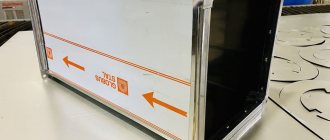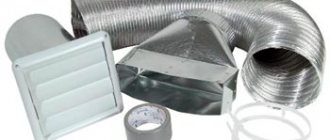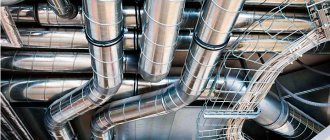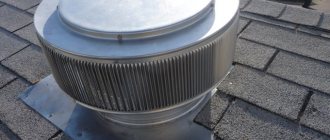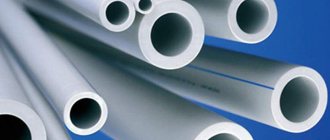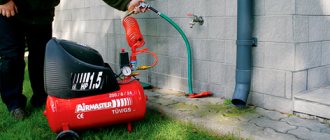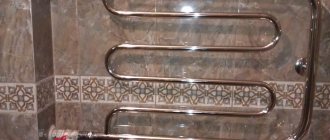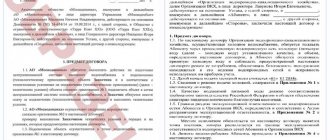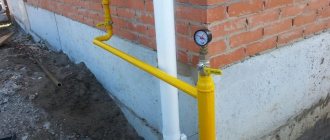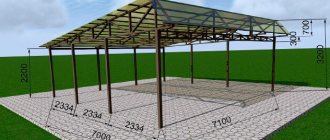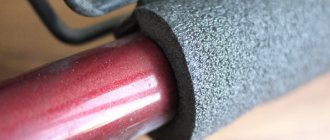Air ducts are the “transport system” of ventilation air conditioning systems and ensure the movement of air masses or other gas mixtures to the right places and are responsible for air circulation in rooms.
- Operational requirements for air ducts
- Main characteristics of air ducts
- Duct stiffness
- Types of air ducts by material of manufacture
- Shape of the internal section of the air duct
- Choosing the diameter of the duct section
- Some requirements for installing air ducts
If the ductwork in your home is not designed or installed correctly, even the most efficient and expensive air handling units will not provide you with enough fresh air, so the cost of making a mistake when choosing air ducts is very high.
Operational requirements for air ducts
Any air circulation system must perform its functions and be user-friendly, and therefore meet certain requirements. So, the air ducts must:
- be completely sealed;
- aerodynamic noise arising during operation of the air handling unit and air movement through the air duct system must not exceed established sanitary standards;
- ensure the required performance of the ventilation system, i.e. the possibility of free passage of air masses at the required speed;
- during operation of the ventilation system, withstand the air pressure created by the air handling unit;
- comply with thermal insulation standards;
- fit harmoniously into the interior;
- occupy minimal space in the room.
Depending on specific conditions, other requirements may be imposed on air ducts, but these are basic.
Air ducts - the “transport system” of ventilation
Why are they needed and what are they?
When planning a ventilation structure, attention should be paid to air ducts. The reliability of the entire complex will depend on the correct choice, reliability of the equipment, efficiency and installation of the device. Air ducts are a type of channels that are used for ventilation. Due to them, air masses move in a certain direction.
Thanks to properly installed equipment and components, oxygen is supplied to rooms located in private homes and industrial buildings, and contaminants and waste air masses are removed.
The best manufacturers have made sure that the user can independently regulate the flow rate and pressure indicator through the valves. To solve the main problems, several ways to solve them have been identified:
- Supply and exhaust design. According to buyers, it is considered one of the most effective ways to solve the problem. To do this, you will need to lay two channels at a respectful distance from each other. Through one of them, contaminated masses will be removed, while through the second, fresh air will be supplied.
- In the second case, clean air will enter the premises through windows, doors or specially equipped openings. To remove contaminated masses, a separate exhaust duct is installed and used.
Often, when installing a ventilation system, several types of air ducts are used simultaneously. Together they represent a full-fledged network with a huge number of branches, shafts and branches.
Main characteristics of air ducts
Today, the buyer has access to many different solutions for constructing a ventilation system, including air ducts and fittings, etc. The TopClimat.ru portal presents over 500 different models of air ducts. It is difficult for an uninitiated person to choose from this variety what he needs. The fact is that air ducts for ventilation differ in:
- rigidity;
- material of manufacture;
- cross-sectional shape of the channel;
- dimensions and diameter of the channel section;
- method of insulation - some air ducts are insulated after installation, some have heat-insulating ability initially.
Evgenia Goryunova, Head of Marketing Department, PirroGroup
“The vast majority of air ducts are made rigid, that is, with an initially specified spatial shape. Flexible air ducts allow you to change the direction (trajectory) of the network installation right on the spot, which makes them indispensable in projects with complex route geometry and possible intersections with other communications, as well as when linking the final (initial) places of the ventilation network to a laid rigid air duct.”
Many consider the price of ventilation pipes to be one of the main characteristics, forgetting that it is not enough to buy an air duct, you then need to install it, operate and maintain it. And often the costs that the buyer will incur at these stages exceed the savings that arose at the acquisition stage.
Rating of the best models with a hard channel
Indicators of noise insulation and strength are maximum. Installation methods, weight and cost are practically the same.
ERA 511-VP
A quality product from a reputable manufacturer. The model is suitable for systems with a rectangular cross-section. Used for arranging exhaust and supply ventilation systems. If there are special connecting elements, it is possible to connect the structure to previously installed equipment. It should be noted that the selected elements must have the same cross-section. They belong to the inexpensive category, and are also easy to repair. PVC is used as raw material. Based on the stated characteristics, elements with a diameter of 55x110 mm are the most popular. Belongs to the category of hard channels.
Cost – 230 rubles.
air duct ERA 511-VP
Advantages:
- main material – PVC (white);
- element width 110 mm;
- element height 55 mm;
- rectangular section;
- diameter can be 110 mm, 1000 mm, 100 mm or 500 mm;
- can be used to design flat systems;
- length 50-2000 mm;
- The package contains 35 elements placed in a thermal bag.
Flaws:
- you will need an auxiliary kit with the appropriate cross-section.
Vents 8020
A flat channel, which is used for premises for various purposes. With its help, you can easily arrange supply and exhaust ventilation. Ceiling installation is allowed, provided that the ceiling needs to be lowered to a minimum. Available in white. Made from PVC. The permissible channel lengths are 2 m, 1.5 m, 1 m and 0.5 m. The channels can have the following cross-section:
- 204x60 mm;
- 120x60 mm;
- 110x55 mm.
Tees, corners and other auxiliary elements are used as connecting elements.
Price – 640 rub.
air duct Vents 8020
Advantages:
- rectangular shape;
- rigid type air duct;
- PVC (light weight);
- it is possible to create flat channels;
- suitable for arranging any type of premises;
- ease of installation work.
Flaws:
- not identified.
ERA 320-VP
Straight section device 60x204 mm. It is used for arranging exhaust and supply ventilation systems. The structures are classified as rigid. The surface of the model is smooth, which affects the resistance of air masses. The noise level is significantly reduced. There will be no extraneous sounds during operation. A well-thought-out model allows you to assemble a system of any shape and level of complexity. High-quality plastic is used for manufacturing, characterized by resistance to aggressive environments and impact resistance. The product is also impervious to atmospheric conditions. The material is practically not subject to combustion and can withstand significant temperature changes.
Price – 430 rub.
air duct ERA 320-VP
Advantages:
- neutral white color;
- high-strength plastic;
- fireproof;
- shockproof;
- weather resistant;
- low noise level.
Flaws:
- auxiliary connecting elements of a certain size (diameter) will be needed.
ERA 12.5-VP 125 mm
Scope of application: creation of exhaust and supply ventilation in buildings and structures for various purposes. The surface of the elements is smooth, which has a beneficial effect on the resistance of air masses. The noise level during operation is low. The declared design features allow you to create a ventilation system of any shape, size and level of complexity. High-quality plastic is used for manufacturing, which guarantees high resistance to aggressive environments, impact resistance and the ability to withstand any weather conditions. The material is highly flammable and can withstand significant temperature changes.
Cost – 320 rubles.
air duct ERA 12.5-VP 125 mm
Advantages:
- country of origin – Russia;
- light weight;
- PVC as main material;
- excellent quality indicators and resistance to external influences;
- allows you to make a design of any complexity.
Flaws:
- For installation, connecting devices of a certain diameter will be required.
ERA 15-VP 150 mm
Such an air duct will provide excellent exhaust or supply ventilation, which can be installed in buildings and structures of any size and purpose. If necessary, you can always purchase additional elements and install them in an existing system, thereby expanding or improving it. However, this will require structures of the same type and size. With their help, you can assemble round channels of any length.
Cost – 400 rub.
air duct ERA 15-VP 150 mm
Advantages:
- country of brand registration – Russia;
- high-strength white PVC;
- possibility of choosing the optimal diameter;
- the length of the channel will be 0.5-2 m;
- a triple lock is used for connection;
- operating temperature range -30°С - +100°С;
- ease of installation;
- light weight.
Flaws:
- additional fasteners will be needed.
Vents 3005 150 mm
Plastic elements with a round cross-section, which are used for arranging ventilation systems in medium and small rooms. Also, using the Vents 3005 model, you can connect a hood in the kitchen. For connection you will need auxiliary elements with a diameter of 100-200 mm. The manufacturer uses white PVC as the main material. It has a length of 0.5 m. The diameter of the outer part is 153 mm. Inner diameter – 150 mm.
Price – 200 rub.
air duct Vents 3005 150 mm
Advantages:
- supplied in thermal packaging;
- if necessary, the manufacturer makes independent calculations and design of the future ventilation system;
- reasonable cost;
- structural strength;
- service life;
- ease of installation;
- neutral colors;
- light weight.
Flaws:
- not identified.
Duct stiffness
According to the degree of rigidity, all air ducts are divided into:
- hard;
- semi-rigid;
- flexible.
The vast majority of air ducts are made rigid, that is, with an initially specified spatial shape. Flexible air ducts allow you to change the direction (trajectory) of the network installation right on the spot, which makes them indispensable in projects with complex route geometry and possible intersections with other communications, as well as when linking the final (initial) places of the ventilation network to a laid rigid air duct.
| Other TopClimat.ru publications on the topic | |
| Rectangular and round ducts | |
| What does the ventilation system consist of? | |
One of the most striking examples of using a flexible air duct in everyday life is the outlet from the exhaust hood in the kitchen to the general house ventilation manifold.
Types of materials and their performance properties
Most residential ventilation pipes are made of metal or plastic. The product range includes dozens of different items. Alternative options for arranging a ventilation system include products made from technical textiles and sandwich pipes.
Type #1 - plastic air ducts
The category of plastic pipes for ventilation has significantly replaced traditional galvanization and is increasingly used in the creation of air duct networks for private households.
The range of polymer products allows you to select pipes for organizing the internal and external parts of the ventilation system. The installation of a plastic highway in small buildings is quite justified
The main arguments for ventilation from polymer pipes:
- absolutely not susceptible to corrosion, which cannot be said about galvanized counterparts;
- ease of installation and processing - plastic can be cut with a hacksaw, and individual elements can be joined by heating the ends, ensuring complete tightness of the air duct;
- light weight - in this matter polymers have no competition;
- smooth surface and absence of welds - resistance to moving air flow is reduced, which allows the use of lower power fans;
- low cost.
Treating plastic pipe products with an antistatic agent minimizes dust “sticking” and reduces the number of cleanings. Due to the physical properties of the material, the pipeline practically does not “buzz”. Dimensions: length – 3-12 m, diameter – 16-1600 mm.
The listed advantages of plastic, along with low cost, make polymer products the most popular for ventilation. However, there are also negative sides.
The weakness of plastic is its low fire resistance. Therefore, the polymer air duct is applicable within a single fire zone, compartment or department. Plastic is prohibited for industrial ventilation installations
When giving preference to a plastic line, you should take into account the characteristics of a particular polymer.
The construction market offers the following types of ventilation pipes:
- Polyvinyl chloride . Advantages of PVC air ducts: resistance to UV rays, accessibility, operating temperature range - from -10 °C to +70 °C. A popular area of application is exhaust pipes that provide ventilation in the kitchen and bathrooms.
- Polypropylene . The material is superior to PVC in terms of technical and operational characteristics. Properties: limit heating temperature +85 °C, resistance to aggressive substances. There is a fire-resistant variety (PPS) with fire retardant additives. Polypropylene is coated with an antistatic agent, minimizing the accumulation of dust.
- Fluoroplastic . Fluorine-containing polymers are characterized by heat resistance (from -60 °C to +200 °C), resistance to UV exposure, and immunity to alkalis and acids.
- Polyethylene . Withstands negative temperatures down to -50 °C and heating up to +80 °C. The material retains its primary qualities under the influence of ultraviolet radiation.
Polyurethane products have similar characteristics to PVC pipes. The difference between the latter is its high heat resistance (up to +270 °C).
We recommend that you familiarize yourself with the nuances of choosing plastic pipes for arranging ventilation.
The shape of the flow section of plastic pipes is circle, square, rectangle. Rigid or flexible structure possible. Corrugated air ducts can be a symbiosis of a steel frame, aluminum foil and plastic layers
Type #2 - galvanized products
Galvanized pipe products are distinguished by their versatility - air ducts are used for arranging industrial, administrative buildings and residential premises.
Types of air ducts by material of manufacture
Ducts are made from a wide variety of different materials. For this use:
- stainless, black or galvanized steel;
- aluminum foil on a spiral frame;
- polymeric materials – plastic, structural thermal insulation boards based on polyisocyanurate (PIR);
- textile materials.
Metal air ducts are used most often because... They are distinguished by their versatility, and most importantly, construction and design organizations are accustomed to them, because There are a large number of companies on the market offering ventilation equipment of this type. Steel ventilation pipes are indispensable if the ventilation system is operated under conditions of high pressure and temperatures.
Air ducts made of galvanized steel can be used almost everywhere: in any climatic conditions and for any type of ventilation. The only limitation is that they cannot be used to transport aggressive gas-air mixtures. A protective layer of zinc on the inner and outer surfaces of the air duct protects it from corrosion, and even in damaged areas, when interacting with oxygen, a protective film is formed.
Such air ducts are made from cold-rolled galvanized sheet steel with a thickness of 0.5 to 1.4 mm. They can be used in conditions of relative humidity of air that does not contain impurities, up to 80% and at a temperature of no more than +80ºС.
Air ducts made of black steel are the most rigid, heat- and fire-resistant, but are more susceptible to corrosion and therefore are used less frequently than those made of galvanized and stainless steel. Used in industry.
Round stainless steel duct EVG L 1250/0.8
Stainless steel ducts are versatile and can be used to ventilate virtually any gas under any conditions. They can withstand high temperatures and are very durable, which is why factories often install stainless steel ventilation. But stainless steel is very expensive.
So, steel air ducts have the following advantages:
- they are durable, reliable and durable;
- the smooth inner surface provides them with good aerodynamics;
- dirt, dust and soot hardly accumulate on the smooth walls;
- they are able to withstand high pressure and temperature (up to 500ºC);
- Stainless steel air ducts can be used in facilities with increased sanitation requirements, because... almost no dirt is collected;
- used in environments exposed to aggressive environments.
They also have disadvantages - this is the bulkiness of the design, as well as the fact that steel air ducts laid through cold rooms, such as an attic, require insulation. If this is not provided, condensation will constantly accumulate on the surface of the pipe, which can lead to corrosion and premature failure of the structure.
Corrugated aluminum air duct belongs to the class of flexible air ducts and has a number of advantages. It bends perfectly, you can even tie it into a knot, and the air duct will retain its qualities. And thanks to the corrugations, such an air duct perfectly withstands linear stretching. In addition, aluminum corrugated air ducts are lightweight, durable and highly elastic, which makes their installation easier. They are resistant to high temperatures. Corrugated air ducts find their use in branched ventilation systems - where the use of rigid ones is difficult.
The obvious disadvantages of corrugated aluminum air ducts include high aerodynamic resistance and, as a result, noise during ventilation operation, as well as a significant level of pressure loss due to the corrugated surface. In addition, they are subject to increased surface contamination during operation.
What functions do air ducts perform?
There are 2 types of air ducts: exhaust and supply. The former remove polluted air from the room, the latter evenly supply fresh air from the street.
Additionally, the air ducts provide high-quality noise and heat insulation. That is, they prevent heat loss and also reduce the noise level during operation of the hood, ventilation or air conditioning system.
We recommend the product Air duct Vents Isovent N250/7.5
To order
Air duct length, m: 7.5 | Type of duct: flexible, insulated | Diameter, mm: 250 | Type: vent pipe |
Popular models
Round duct Lissant
Aluminum channel Vents P
Straight section of the round air duct NEMZ "Tayra"
Air ducts: all models
Polymer corrugated air ducts are in many ways similar in quality to aluminum ones, but can be painted in different colors, have an antibacterial coating and are easier to combine with other air ducts of various diameters and profiles.
Plastic air ducts are highly durable; to install them, it is enough to have a standard set of tools (they are cut with a regular hacksaw with a fine tooth, and the edges of the cut elements are not sharp). The main advantages of plastic air ducts for the ventilation system are:
- long service life,
- ease of installation and repair,
- no fasteners are required when assembling the ventilation system,
- good anti-corrosion properties,
- light weight,
- relatively low cost.
The main disadvantage of plastic air ducts is their low level of resistance to high temperatures and mechanical shock loads.
Plastic air ducts for kitchen hoods
Plastic air ducts are very popular today - especially when installing hoods in the kitchen. But adherents of this type should remember that, according to SNiP 41-01-2003, paragraph 7.11, plastic air ducts can be used in low-rise residential, public, administrative and industrial buildings of category D. They cannot be laid in basements, crawl spaces, attics and technical floors, in rooms with standardized fire safety conditions.
Fabric or textile air ducts are made from technical textiles. Such air ducts are installed on the supply part and do not have embedded ventilation grilles at the end of the network: due to the air permeability of the fabric, the air is evenly distributed throughout the entire volume of the room. Textile air ducts have appeared on the Russian climate market relatively recently. But air distribution systems have already proven themselves to be reliable, easy to use and require less energy.
This type of air duct fits organically into the interior; in many cases, ventilation made from textile pipes does not need to be covered with ducts. It is possible to make air ducts from fabric with a decorative pattern. Their other advantages include:
- textile air ducts can be operated in the temperature range from -10ºС to +110ºС;
- they are resistant to moisture and chemicals;
- some models have antibacterial properties;
- they are relatively light in weight and easy to install;
- textile ventilation pipes are characterized by high throughput and uniform air distribution;
- they are easy to repair and clean, the fabric can be cleaned using a washing machine;
- service life - more than 10 years;
- they can be combined with air ducts and shaped elements made of any materials;
- These air ducts have a wide range of colors; it is possible to apply texts and logos directly to the fabric.
Textile air ducts Prihoda
Air ducts based on polyisocyanurate (from PIR panels) have a wide range of applications:
- in residential buildings (including for intra-apartment wiring);
- in commercial and public buildings;
- at sports facilities;
- in production premises.
The following ducts are especially effective:
- in industries and in rooms with high humidity;
- in rooms with increased requirements for cleanliness;
- in building reconstruction projects with requirements to reduce loads on supporting structures.
Air ducts made from PIR panels are initially made of heat-insulating structural material and therefore do not require additional thermal insulation, while at the same time they have high fireproof properties. The service life of such air ducts is very long, up to 30 years. Their other advantages include:
Thermally insulated air ducts PirroVentiDuct
- The ability to create air ducts from PIR panels of any configuration, fitting them into even the most limited spaces.
- Light weight. Ventilation pipes made of PIR boards can be installed without problems even where the load on load-bearing building structures is limited. In addition, fewer fasteners are used for installation.
- Easy to install: The air transport system requires a minimum of special tools and labor to install. To fasten the sections, both traditional solutions are used (studs, mounting traverses, brackets, etc.), and special L-shaped toothed brackets for the stud, which reliably fix the position of the air duct and give the structure additional rigidity.
Features of plastic and area of use
There are often negative reviews about plastic air ducts, but they are caused by stereotypes about the potential toxicity of the material. Of course, if it is of poor quality, it can be harmful to health. In the kitchen where it is installed, there are also unfavorable factors, such as:
- significant amount of fat;
- various types of evaporation;
- thermal impact.
Speaking about plastic, we should indicate a whole group of materials whose properties are strikingly different. Ventilation ducts are made from the following types of plastics:
- Polyvinyl chloride. It is able to function under a wide temperature range. Products made from it are installed, including in unheated rooms.
- Fluoroplastic. It is resistant to acids. It also does not lose its properties at different temperatures.
- Polypropylene. Its main advantage is its ability to resist organic substances, acids and alkalis.
- Low-pressure polyethylene. Flexible material, practically impervious to mechanical stress. However, it reacts negatively to low temperatures.
For kitchen hoods, it is advisable to use polypropylene modifications. If the room is hot, you should give preference to materials such as PVDF and PVC. To carry out ventilation distribution in all other rooms, you can use polyethylene ducts.
Shape of the internal section of the air duct
According to the shape of the internal section of the channel, air ducts differ in:
- round;
- flat oval or oval;
- rectangular.
Round air ducts are rightfully considered the most effective. They have the least air resistance and, therefore, less pressure loss. In addition, round air ducts are cheaper than rectangular and flat-oval products. Rectangular air ducts are less efficient, but due to their compactness, their use is widespread in the construction of buildings. There is also such a point - until recently, equipment for the production of round air ducts cost one or two orders of magnitude more than what was used for the production of rectangular ones. And although the situation has already changed, there are quite a few manufacturers of rectangular air ducts on the market.
Flat-oval air ducts are the least common, but they are superior to both rectangular and round air ducts in certain parameters.
Leonty Pashkov, Leading Manager
“A distinctive feature of textile air ducts is that they are calculated and manufactured for a specific object, for a specific technical specification. “Many factors are taken into account: the dimensions of the room, the height of the air ducts, temperature conditions and, of course, the wishes of the customer.”
The advantage of rectangular air ducts over round ones is that they fit more organically into the interior, they are easier to fit into a corner under the ceiling, but this is where their advantages practically end.
Recently, rectangular ventilation pipes have often been replaced with round ones. The surface area of a round air duct is 12% less than the surface area of a square air duct with a similar open cross-section. When the aspect ratio of a rectangular duct is 1:4, the difference increases to 40%. This makes it effective to replace one flat duct with several round ones running in parallel.
If we compare the efficiency of round and flat oval air ducts, the primacy will remain with traditional round air ducts. But flat oval ducts, in addition to being able to be compactly placed where round ducts take up too much space, are more efficient than rectangular ones. Air pressure losses in flat-oval air ducts are significantly lower due to rounded corners and less turbulence of air flows in the air duct.
In addition, the appearance of flat oval air ducts is superior to both of their “competitors,” which makes them especially valuable when placed openly in a space.
Why are air ducts needed and where are they used?
Air ducts are an essential element of any ventilation or air conditioning system. Their main task is to regulate and direct air flow in the room.
Air ducts are used when installing any ventilation systems and air conditioners: domestic, commercial, industrial. They are also bought to connect a kitchen hood, because it also removes polluted air.
Galvanized punched tape is used to secure air ducts. With its help, these elements can be securely fixed to the wall or ceiling.
Limitations in using flexible duct
A fire damper cannot be installed on a flexible air duct
No matter how convenient a flexible hose is for installation, it cannot always be used. The following conditions and situations are prohibited:
- vertical highways with a height difference of 6 m (above 2 floors);
- ventilation systems with a temperature of incoming air masses from +120 degrees;
- systems and mains with excess heat in certain areas;
- ventilation lines in the open air (except for those cases when the reinforced corrugated hose is protected from exposure to precipitation and solar radiation);
- laying a pipeline through walls and floors where it is necessary to use a smoke exhaust valve or an automatic fire damper;
- laying a line through the walls of buildings that have a fire resistance rating of more than 1 hour;
- direct contact of a metal or PVC element with aggressive media or abrasives.
In addition, the installation of flexible ventilation in industrial kitchens, ironing rooms, and laundries is unacceptable, unless otherwise specified by the manufacturer.
Scope of application
Manufacturers produce flexible pipes for air channels in the diameter range from 76 to 710 mm. There are air ducts for general ventilation and high-temperature ones.
In residential construction, pipes up to 350 mm in diameter are in demand. As a complete ventilation system, they are installed in low-rise residential buildings. As separate hoses connected to a central shaft, flexible air ducts are indispensable in multi-apartment buildings.
Flexible air ducts are used:
- in air conditioning systems;
- in the oil refining and chemical industries;
- in public buildings;
- in the food industry.
In production shops, flexible air ducts are used:
- for removing waste, dirty air, which contains mechanical suspensions and chemical contaminants;
- for pumping warm air.
Flexible air ducts with special functions are produced for use in industry. These are insulated pipes, reinforced, with a protective coating, multilayer.
How to clean the air duct?
The ventilation system will do its job well only when it is correctly installed and assembled. But we also must not forget about timely maintenance, since from time to time garbage can get there. It is not necessary to dismantle the device to clean it.
- Mechanical method. This option is suitable for hard structures, as it uses vacuum pumps that can damage soft walls. In addition, hydromechanical tools are often used to thoroughly remove any contamination.
- The chemical method is designed to remove traces of fat that often accumulate in the kitchen and catering areas. However, only appropriate compounds should be used to ensure that the components do not corrode the exterior and interior of the duct.
In addition to constant cleaning, pipes should be disinfected, since pathogenic bacteria and sometimes parasites are constantly forming inside. If they get into food due to improper use or untimely cleaning, the person will be poisoned. Disinfection should be carried out using powders or liquids based on hydrogen peroxide.
If a person does not have special means with which to clean the sewer, it is better to call the appropriate service. Workers always have effective devices that will clean the air duct in a short time and do it efficiently.
Installation nuances
The route for laying the air duct should, if possible, have the shortest length and the minimum number of connections. Before assembly begins, the ventilation system is divided into separate blocks no more than 15 meters long.
Each such node is assembled separately, using the following algorithm:
- The fastening points are marked on the structural elements, and holes are drilled if necessary.
- The individual elements are assembled into larger units, and the joints are carefully sealed.
- Fasteners are installed.
- The finished unit is lifted into place and secured.
- The connection is made with the previously installed node.
Selecting the required parameters
When determining the route and execution of a pipeline for air, it is necessary to solve a complex problem of the optimal combination of many factors. The main points are a rigid or flexible channel, round or rectangular cross-section and what diameter.
More details about these areas:
- The degree of compliance of the air duct is selected depending on the operating conditions and complexity of the route. In a rigid network, corner connecting elements are used to change directions. Flexible sleeves provide trouble-free installation in any direction. There is also a combined option, when a corrugated pipe is joined to a rigid straight section. It should be taken into account that corrugated walls reduce the speed of the air stream.
- The cross-sectional shape is determined by the flow capacity: a circular configuration allows more air to flow with less resistance. In rectangular profiles, part of the corner area remains unused, which forces the adoption of a larger standard size of the air duct. But flat pipes are easy to hide behind furniture or ceiling panels. The best option is an oval cross-section, combining the advantages of round and rectangular ends of the air duct (high cross-country ability and design characteristics).
- The dimensions of the ventilation duct for household ventilation systems are most often taken as Ø100 mm, which corresponds to a flat 55 x 110. The outlet openings of fans, grilles and kitchen hoods are made to this size.
We recommend that you read: How to choose ventilation grilles for external ventilation
From a technical point of view, a length of 3 m is considered normal for household air ducts. Increasing the air path leads to a decrease in its throughput, since each additional meter eats up 10% of productivity.
